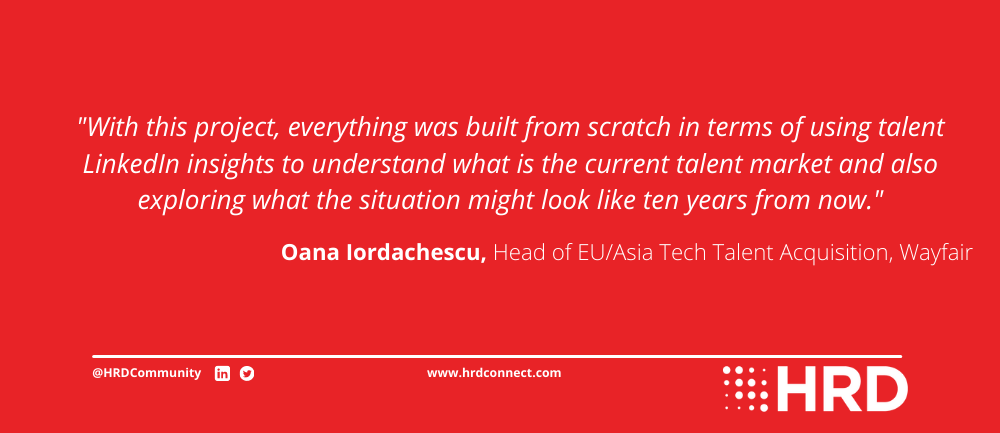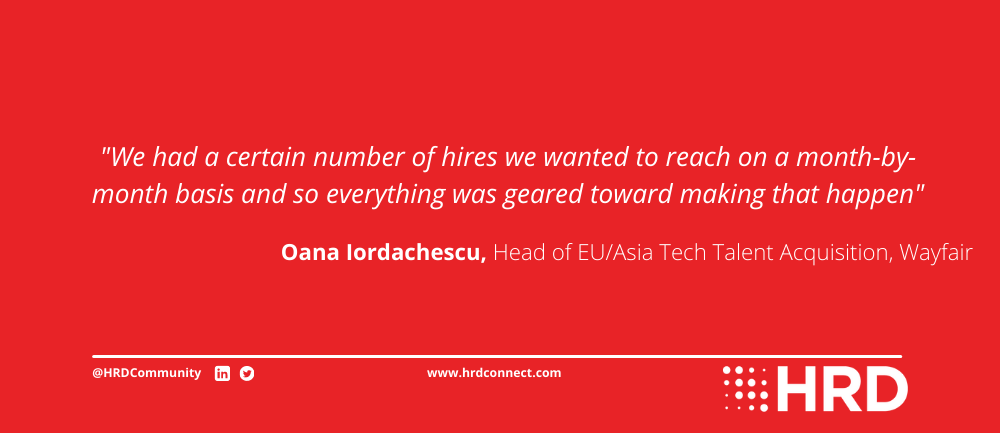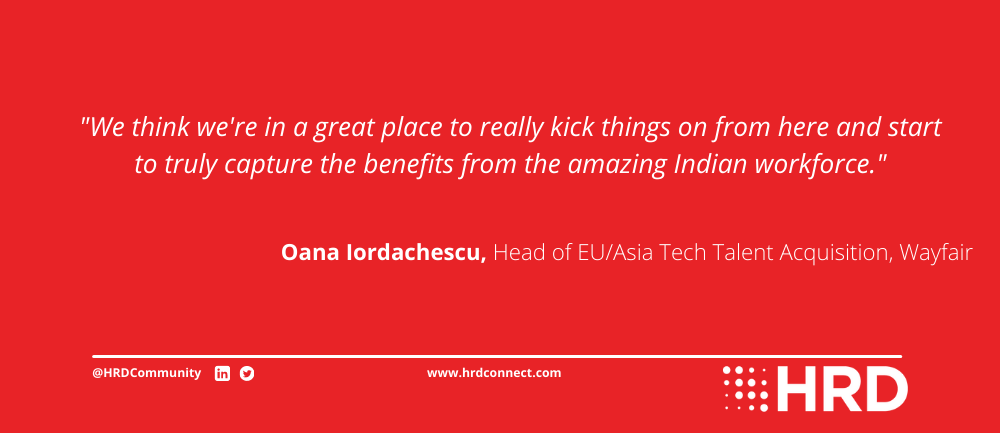-
Provided by
- Date published: Mar 20, 2023
- Categories
In their 2023 Human Capital Trends report, consultancy firm Deloitte highlights how, in our boundaryless world, “work isn’t defined by jobs, the workplace isn’t a specific place, and many workers aren’t traditional employees. ” Adopting such a boundaryless world is especially important as the competition for talent has increased in what the University of Southern California’s Katherine Newman refers to as the tightest labour market in a generation.
Indeed, whether in the United States, Britain, Japan, or China, unemployment rates are at historic lows, making it difficult to secure the talent needed to thrive. It’s perhaps no surprise, therefore, that 80% of the CEOs who responded to PwC’s latest CEO survey said that they were concerned about finding the talent their organizations needed.

Looking globally
Against this backdrop, e-commerce company Wayfair decided to broaden its own search for talent by opening a talent hub in India. The company is well versed in operating globally, with 12,000 suppliers in its partnership network and offices in Boston, Seattle, Austin, Toronto, Berlin, London, Dublin, Shanghai, Milan, and Warsaw.
While this global presence gave them experience, both in terms of operating close to their customer base and in managing a global supplier network of around 12,000 companies, they had to start largely from scratch when it came to tapping into new talent markets.
“With this project, everything was built from scratch in terms of using talent LinkedIn insights to understand what is the current talent market and also exploring what the situation might look like ten years from now,” says Oana Iordachescu, Head of EU/Asia Tech Talent Acquisition at Wayfair.
A talent goldmine
In many ways, however, India was a natural place to look as the country is home to around 5 million tech workers and the IT sector exported $181 billion in 2022. The advanced state of the Indian outsourcing economy also means that workers are experienced in working for overseas firms, whether in a remote capacity or employed by Western firms, such as Amazon and Walmart.
These raw ingredients have been helped in large part by the Digital India campaign launched by the government in 2015 to not only ensure that regions are digitally connected and that government services are available online, but also ensure that digital literacy was universal.
Despite this level of sophistication, the size and uniqueness of the country meant that developing a talent hub would be no easy proposition. The company would have to rapidly learn the regulations, practices, and norms of the country to ensure that the project was successful.
Getting local support
While they have ultimately created a specific legal entity, they began the project by working with a so-called “Employer Of Record”, which helped the company rapidly get up to speed with recruitment, onboarding, and so on. They also worked with a number of partners with experience in aspects of working in India, such as real estate and legal issues.
“This Employer Of Record became our partner in all aspects of recruitment, including managing payroll, conducting interviews, and helping with onboarding new hires,” Iordachescu explains. “We also found a legal partner invaluable as there is a lot of documentation that needs to be submitted to the government.”
This local experience was invaluable in overcoming inevitable cultural differences. For instance, Wayfair is looking to implement a variety of global policies, from Return to Office to wellbeing, but will always give the local context the deciding vote. For instance, if employees prefer more time in the office or working hours that more closely match the timezone of the HQ this will be accommodated. The legal support was also invaluable to help the company navigate the local legal infrastructure. For instance, the company uses digital signatures for contracts and other legal documents, but the technology is not accepted in India, so we had to adopt a different approach to everything from employment to supplier contracts.

Positive results
The initial results are nonetheless positive, however, with the company aiming to recruit around 800 people by the end of 2024. Their efforts to date have been successful, as initial projections were that they would suffer from high dropout rates, but this hasn’t materialized. While the cooling of the labor market has undoubtedly played a part in that, so too has the approach adopted by the company.
“As a result, when people say yes to a job offer, they really say yes,” Iordachescu says. “While there is an element of luck involved in that due to the state of the market we’re ready to adapt our practices to ensure that such rates don’t return when the labor market returns to normal”.
This is also likely to see learning go both ways, with it not being the case that best practices from western offices will be parachuted into the Indian market but also that the lessons being learned in India will also influence how the company behaves in its more established offices.
The company had a number of objectives for the first phase of the project:
- Hitting key milestones on the roadmap, and especially in terms of ensuring that the right people had bought into the project. This was not just a case of securing buy-in from the HR function but senior leaders across the business.
- Ensure that the right partners were in place, with those partners being crucial to ensuring that the project got off to a good start and positive momentum was built. This was crucial to also ensure that the company was aware of the resources it would need to succeed.
- Create a robust project management plan, so that everyone involved in the project, both internally and externally, was aware of their role and what was expected of them.
Underpinning each of these was the overarching desire to ensure the employer of record was in place and that initial recruitment could begin as quickly and effectively as possible.
“We had a certain number of hires we wanted to reach on a month-by-month basis and so everything was geared toward making that happen,” Iordachescu explains.
Lessons learned
The project has produced a number of invaluable lessons on how to successfully build geographically dispersed teams. The first of these is to ensure that the right leader is in place as early as possible. It’s vital that the local market has a strong degree of trust in you as an organization to be a respectable and reliable actor in the local community, and having the right leader is a crucial first step toward achieving that.
Getting the right leader can take time, but it is always worth taking that time to ensure that you don’t make mistakes. As the saying goes, you only have one chance to make a first impression, and this is particularly so in a new market where you have to build your reputation slowly but surely.
It’s also important that the organization is willing, and able, to adapt to the changing circumstances. German field marshal Moltke the Elder famously said that no strategy survives contact with the enemy, and when developing a talent hub in a new territory, it’s inevitable that things will happen that were not expected. As such, having both the agility and the humility to pivot when required is crucial.
This humility is also important to ensure that cultural differences are handled adroitly. This is especially important in a country as rich and diverse as India as there are hundreds of different cultures, languages, and dialects at play. This can make it difficult to effectively operate and present opportunities for miscommunication. Wayfair managed this situation by liaising closely with the internal diversity, equity, and inclusion team to ensure that hiring managers were trained on the various cultural awareness issues that would be pertinent to the Indian community.

Achieving a diverse workforce
The benefits of developing a more diverse workforce are numerous, including improving the quality of hire, increasing the diversity of teams, and ensuring greater cultural literacy for the organization. Doing so is not without challenges, however, as Wayfair has illustrated.
When done successfully, global recruitment allows recruiters to source the skills of the future from a much deeper pool of talent. It also allows HR teams to adapt candidate personas from across the world, while allowing them to spot new ways to target the candidates they need.
“We managed to secure a really great site leader, who is a former VP of technology at Walmart, and have incorporated the local entity recently,” Lordachescu concludes. “So we think we’re in a great place to really kick things on from here and start to truly capture the benefits from the amazing Indian workforce.”


